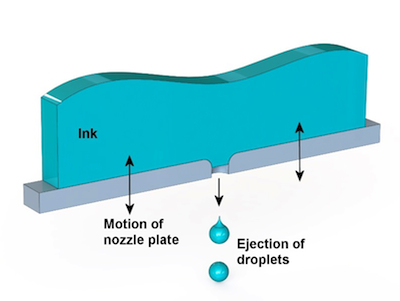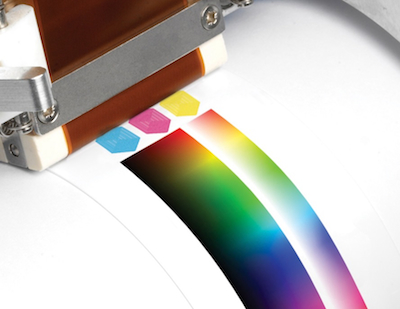UK-based research and development company TTP, has come up with innovative digital inkjet technology that is capable of printing with standard industrial paints.
The company has already tested its Vista Inkjet process successfully with cellulose and two-part part polyurethane paints used for car and aircraft body manufacturing.
This opens up many other possible applications including the use of thermoplastic fluoropolymer paints such as Kynar, for decorative finishes on architectural metallic structures. TTP is also exploring the printing of low cost and high functionality materials for ceramics, textiles, security and brand protection along with high conductivity patterns and 3D printing.
The patented printhead design overcomes the limitations of existing inkjet printing processes, restricted by ink formulations and the use of closed chambers and narrow channels.
Instead, Vista Inkjet is based on a planar construction that allows free-flowing ink circulation and accurately controls the movement of the nozzle plate to eject droplets, from 0.5 pl to over 1 nl. This means that fluids with large particulates and high viscosities can be used along with aqueous pigmented inks and a range of solvent inks such as alcohol based fluids, ethyl acetate, MEK and Dowanol. The motion of the nozzle plate is controlled by customised electrical drive signals to eject droplets on-demand or on a continuous basis.

The new system provides precise and consistent droplets with excellent direction control and placement accuracy. For example a TTP prototype array of 128 Vista nozzles has delivered drop placement accuracy with a standard deviation of just +/- 3 milli-rads. Printheads can also be designed with specific nozzle diameters, pitch and number of rows for different inks, paints and applications. And with the simple inertial transfer mechanism and fluid recirculation, the ejector system is reliable with easy priming, self-cleaning and excellent refill attributes.
‘We have taken the principles of inkjet printing and re-invented the ejection mechanism and printhead to create a potentially disruptive technology for digitally printing industrial paints, opening up exciting new opportunities from customising car and aircraft bodies to creating architectural finishes and printed electronics,’ said David Smith, head of business development. ‘As well as providing greater flexibility, the process also saves time and money and reduces waste.’

